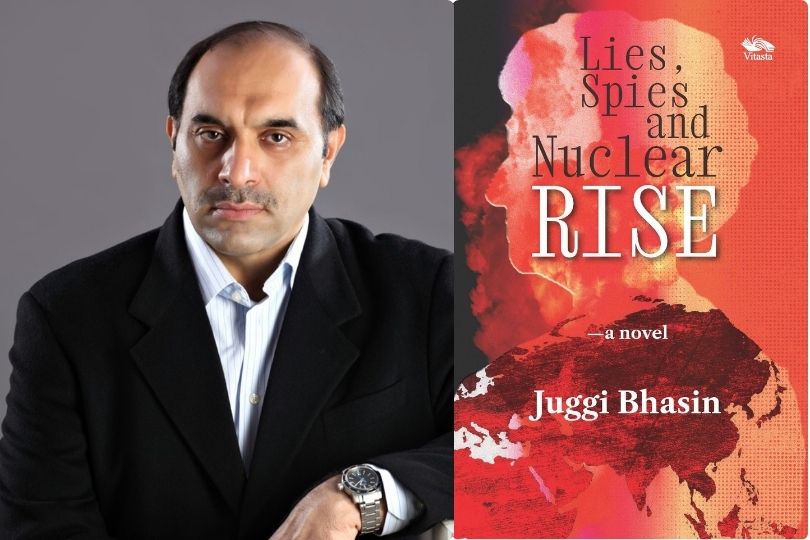Interview with Akshay Manwani, Author of “The Tiger The Bear And The Battle For Mahovann”
Akshay Manwani, author and wildlife enthusiast, blends storytelling with wildlife education in his book "The Tiger, The Bear and The Battle for Mahovann.on Jul 29, 2024

Akshay Manwani is father to Naina and to Noorie, a loopy retriever. Akshay has chased gibbons and hornbills in India, gorillas and giraffes in Africa and koala bears and kookaburras in Australia. He writes on Indian cinema and popular culture for a variety of publications such as Tie Caravan, The Indian Quarterly, Scroll.in, Mint, Business Standard and Mumbai Mirror. Akshay appears on television as a National Basketball Association (NBA) expert. His only remaining ambition, before he goes completely bald, is to visit every national park and wildlife sanctuary in India.
Frontlist: "The Tiger, The Bear and The Battle for Mahovann" is an intriguing blend of storytelling and wildlife education. What inspired you to write this book, and how did your experiences in various wildlife sanctuaries influence its creation?
Akshay: I wrote the book as a response to my then eight-year-old daughter’s request that I should write something for her instead of my regular non-fiction books on Hindi cinema. Simultaneously, I had been doing a lot of wildlife photography across the many wild areas around India since 2017. I thought it might be a good idea to write a story where the animal and bird species found in the Indian wild play prominent characters in my book.
Frontlist: The book serves as a primer to India's incredible wildlife diversity. Can you share some interesting facts or lesser-known details about Indian wildlife that you discovered during your research?
Akshay: My very initial learning was that India has incredible biodiversity. What I mean by that is the animals and birds found in the eastern part of India, for instance, in the Little Rann of Kutchh, are very different from the fauna found in the southern or western part of the country.
Secondly, there are so many varieties of the same species. For instance, during my travels in the last 7-8 years, I have learned of more than 10 ape/simian species. These would include the pig-tailed macaque, the stump-tailed macaque, the bonnet macaque, the lion-tailed macaque, the rhesus macaque, the Nilgiri langur, the golden langur, the common langur, the Himalayan langur and the hoolock gibbon. The Hoolock gibbon is a very interesting ape species because it is the only ape species that is found in small nuclear family units, ranging from two to four individuals. All other ape species consist of groups of larger numbers.
Frontlist: How does writing for a younger audience differ from your other works, like "Sahir Ludhianvi: The People's Poet"? What adjustments did you have to make in your writing style?
Akshay: I was very aware that I was writing for a much younger audience. I was careful to introduce humor so that the audience does not get bored with the story. Also, I was careful with my vocabulary. I chose to use simpler words rather than something that a child may find difficult to understand.
Frontlist: Can you discuss the symbolism behind key characters like Veera the tiger and Taranath the bear, and how they represent different aspects of leadership and morality?
Akshay: I think this question would be better answered while detailing the characters of Sultana the tigress and Taranath the bear. Veera is the old king of Mahovann, and he is on his way out. He is more like a background character, but the real hero of the story is Sultana. While Taranath stands for bullying, represents oppression and destroys everything in his path because of his anger, Sultana is about telling children to stand up against any kind of tyranny and oppression. Also, because of her gender, I would like young girls to believe that they too can ‘do’; they too can become leaders where people may be hesitant to show the way to others.
Frontlist: How do you aim to empower young readers to find their voices and take action on issues they care abouT?
Akshay: By writing a story like ‘The Tiger, The Bear…’ I hope the children feel that there is a unique voice here. The uniqueness is in the revelation that Sultana is the heroine of the story. She trumps her own partner (a male tiger) to show the animals of Mahovann the way to overthrow Taranath
The story is also unique at the level of the choices Sultana is faced with in overthrowing Taranath – whether by an all-out war, which will cost hundreds of lives, or a less violent option, but which is more dangerous for her.
The key thing is if children like the book, it will hopefully open their minds to tell their own unique stories and ideas.
Frontlist: Given your diverse interests and expertise, what can we expect next from you? Do you have plans to continue writing children’s books or perhaps delve into other genres?
Akshay: I definitely plan to write one more children’s book. I’m sure about that. But I don’t know if that will be the immediate next one or after a few more non-fiction books, which is how I got into writing in the first place. Let’s wait and watch (and read).



.jpg)






.jpg)


.jpg)
.jpg)
.jpg)

.jpg)

.jpg)










Sorry! No comment found for this post.